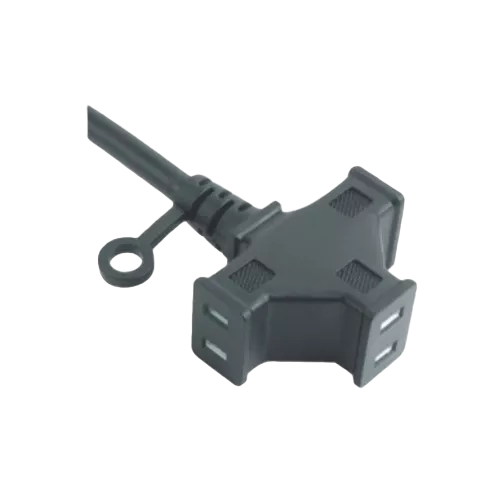The construction of a Japanese standard power cord, like many other international standards, adheres to specific guidelines and regulations to ensure safety and compatibility with electrical devices. However, there are certain aspects that differentiate Japanese standard power cords from other international standards:
1. Plug Type:
Japanese standard power cords utilize plugs conforming to the JIS C 8303 standard. These plugs are characterized by two flat parallel pins. While this design is akin to the American NEMA 1-15 standard, Japanese plugs lack the polarization found in American plugs. This distinction is critical for ensuring correct insertion into sockets.
2. Voltage and Current Ratings:
Japanese standard power cords are engineered to function within the country's specific voltage and current ratings, which are 100-127V and 15A respectively. This contrasts with regions such as Europe and many parts of Asia, where the voltage commonly runs at 220-240V. The cord's design and materials must accommodate these specific electrical parameters.
3. Wire Size:
The wire size within a power cord, measured in American Wire Gauge (AWG) or square millimeters, is selected based on the cord's current-carrying capacity and local regulations. Japanese standard power cords use wires with the appropriate gauge to handle a maximum current of 15A. Proper wire sizing is critical for preventing overheating and ensuring electrical safety.
4. Color Coding:
The color-coding of wires in Japanese power cords adheres to international standards. Typically, black or brown wires indicate the hot/live conductor, white or light-colored wires denote the neutral conductor, and green or green/yellow wires represent the grounding conductor. Consistent color coding is essential for electricians and consumers to identify the correct wires for safe installation and maintenance.
5. Grounding:
Japanese standard power cords can be either grounded or ungrounded. Grounded power cords feature a third prong for grounding, providing an additional layer of safety. Grounding is crucial for dissipating excess electrical energy and safeguarding both the device and the user from electrical faults, particularly in high-power appliances and industrial equipment.
6. Certifications:
To ensure compliance with Japanese safety regulations, Japanese standard power cords must bear the PSE (Product Safety Electrical Appliance and Material) mark. This certification signifies that the cords meet the necessary safety standards and have undergone rigorous testing procedures, assuring consumers and businesses of their reliability and safety.
7. Plug and Socket Compatibility:
Japanese power cords are specifically designed to fit Japanese plugs and sockets. These plugs are not compatible with those used in many other countries, as international standards vary significantly in design and configuration. This incompatibility necessitates the use of adapters or the replacement of plugs and sockets when devices are used in different regions.
8. Cord Thickness and Insulation:
Japanese standard power cords are manufactured with an emphasis on durability and safety. This includes using appropriate insulation materials and ensuring a sufficient cord thickness. High-quality insulation is crucial for preventing electrical leakage, short circuits, and wear over time, thereby extending the lifespan of the power cord.
9. Environmental Considerations:
In recent years, there has been a growing emphasis on environmentally friendly manufacturing practices. Manufacturers of Japanese standard power cords, like their counterparts worldwide, might adhere to specific environmental standards and regulations. This commitment ensures that the production processes minimize environmental impact, such as the use of eco-friendly materials and energy-efficient manufacturing techniques.
JZ2-15B Japanese standard power cord

JZ2-15B Japanese standard power cord



 English
English عربى
عربى











